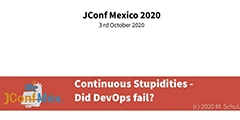Why do we even need the option to save application configurations in text files? Isn’t a database sufficient for this purpose? The answer to this question is quite trivial. The information on how an application can connect to a database is difficult to save in the database itself.
Now you could certainly argue that you can achieve such things with an embedded database such as SQLite. That may be correct in principle. Unfortunately, this solution is not really practical for highly scalable applications. And you don’t always have to use a sledgehammer to crack a nut. Saving important configuration parameters in text files has a long tradition in software development. However, various text formats such as INI, XML, JSON and YAML have now become established for this use case. For this reason, the question arises as to which format is best to use for your own project.
INI Files
One of the oldest formats are the well-known INI files. They store information according to the key = value principle. If a key appears multiple times in such an INI file, the final value is always overwritten by the last entry that appears in the file.
; Example of an INI File
[Section-name]
key=value ; inline
text="text configuration with spaces and \' quotas"
string='can be also like this'
char=passwort
# numbers & digets
number=123
hexa=0x123
octa=0123
binary=0b1111
float=123.12
# boolean values
value-1=true
value-0=falseAs we can see in the small example, the syntax in INI files is kept very simple. The [section] name is used primarily to group individual parameters and improves readability. Comments can be marked with either ; or #. Otherwise, there is the option of defining various text and number formats, as well as Boolean values.
Web developers know INI files primarily from the PHP configuration, the php.ini, in which important properties such as the size of the file upload can be specified. INI files are also still common under Windows, although the registry was introduced for this purpose in Windows 95.
Properties
Another very tried and tested solution is so-called property files. This solution is particularly common in Java programs, as Java already has a simple class that can handle properties. The key=value format is borrowed from INI files. Comments are also introduced with #.
# PostgreSQL
hibernate.dialect.database = org.hibernate.dialect.PostgreSQLDialect
jdbc.driverClassName = org.postgresql.Driver
jdbc.url = jdbc:postgresql://127.0.0.1:5432/together-testIn order to ensure type safety when reading .properties in Java programs, the TP-CORE library has an extended implementation. Despite the fact that the properties are read in as strings, the values can be accessed using typing. A detailed description of how the PropertyReader class can be used can be found in the documentation.
.property files can also be used as filters for substitutions in the Maven build process. Of course, properties are not just limited to Maven and Java. This concept can also be used in languages such as Dart, nodeJS, Python and Ruby. To ensure the greatest possible compatibility of the files between the different languages, exotic notation options should be avoided.
XML
XML has also been a widely used option for many years to store configurations in an application in a changeable manner. Compared to INI and property files, XML offers more flexibility in defining data. A very important aspect is the ability to define fixed structures using a grammar. This allows validation even for very complex data. Thanks to the two checking mechanisms of well-formedness and data validation against a grammar, possible configuration errors can be significantly reduced.
Well-known application scenarios for XML can be found, for example, in Java Enterprise projects (J EE) with web.xml or the Spring Framework and Hibernate configuration. The power of XML even allows it to be used as a Domain Specific Language (DSL), as is used in the Apache Maven build tool.
Thanks to many freely available libraries, there is an implementation for almost every programming language to read XML files and access specific data. For example, PHP, a language popular with web developers, has a very simple and intuitive solution for dealing with XML with the Simple XML extension.
<?xml version="1.0" encoding="UTF-8"?>
<web-app version="3.1"
xmlns="http://xmlns.jcp.org/xml/ns/javaee"
xmlns:xsi="http://www.w3.org/2001/XMLSchema-instance"
xsi:schemaLocation="http://xmlns.jcp.org/xml/ns/javaee
http://xmlns.jcp.org/xml/ns/javaee/web-app_3_1.xsd">
<context-param>
<param-name>contextConfigLocation</param-name>
<param-value>/WEB-INF/assembly/ApplicationContext.xml</param-value>
</context-param>
<context-param>
<param-name>javax.faces.PROJECT_STAGE</param-name>
<param-value>${jsf.project.stage}</param-value>
</context-param>
<listener>
<listener-class>org.springframework.web.context.ContextLoaderListener</listener-class>
</listener>
<listener>
<listener-class>org.springframework.web.context.request.RequestContextListener</listener-class>
</listener>
<servlet>
<servlet-name>Faces Servlet</servlet-name>
<servlet-class>javax.faces.webapp.FacesServlet</servlet-class>
<load-on-startup>1</load-on-startup>
</servlet>
<servlet-mapping>
<servlet-name>Faces Servlet</servlet-name>
<url-pattern>*.xhtml</url-pattern>
</servlet-mapping>
<welcome-file-list>
<welcome-file>index.xhtml</welcome-file>
</welcome-file-list>
</web-app>
JSON
JavaScript Object Notation, or JSON for short, is a relatively new technology, although it has been around for several years. JSON also has a corresponding implementation for almost every programming language. The most common use case for JSON is data exchange in microservices. The reason for this is the compactness of JSON. Compared to XML, the data stream to be transferred in web services such as XML RPC or SOAP with JSON is much smaller due to the notation.
There is also a significant difference between JSON and XML in the area of validation. Basically, there is no way to define a grammar like in XML with DTD or schema on the official JSON homepage [1]. There is a proposal for a JSON grammar on GitHub [2], but there are no corresponding implementations to be able to use this technology in projects.
A further development of JSON is JSON5 [3], which was started in 2012 and has been officially published as a specification in version 1.0.0 [4] since 2018. The purpose of this development was to significantly improve the readability of JSON for people. Important functions such as the ability to write comments were added here. JSON5 is fully compatible with JSON as an extension. To get a brief impression of JSON5, here is a small example:
{
// comments
unquoted: 'and you can quote me on that',
singleQuotes: 'I can use "double quotes" here',
lineBreaks: "Look, Mom! \
No \\n's!",
hexadecimal: 0xdecaf,
leadingDecimalPoint: .8675309, andTrailing: 8675309.,
positiveSign: +1,
trailingComma: 'in objects', andIn: ['arrays',],
"backwardsCompatible": "with JSON",
}YAML
Many modern applications such as the open source metrics tool Prometheus use YAML for configuration. The very compact notation is very reminiscent of the Python programming language. YAML version 1.2 is currently published.
The advantage of YAML over other specifications is its extreme compactness. At the same time, version 1.2 has a grammar for validation. Despite its compactness, the focus of YAML 1.2 is on good readability for machines and people alike. I leave it up to each individual to decide whether YAML has achieved this goal. On the official homepage you will find all the resources you need to use it in your own project. This also includes an overview of the existing implementations. The design of the YAML homepage also gives a good foretaste of the clarity of YAML files. Attached is a very compact example of a Prometheus configuration in YAML:
global:
scrape_interval: 15s
evaluation_interval: 15s
rule_files:
# - "first.rules"
# - "second.rules"
#IP: 127.0.0.1
scrape_configs:
- job_name: prometheus
static_configs:
- targets: ['127.0.0.1:8080']
# SPRING BOOT WEB APP
- job_name: spring-boot-sample
scrape_interval: 60s
scrape_timeout: 50s
scheme: "http"
metrics_path: '/actuator/prometheus'
static_configs:
- targets: ['127.0.0.1:8888']
tls_config:
insecure_skip_verify: trueResumee
All of the techniques presented here have been tried and tested in practical use in many projects. Of course, there may be some preferences for special applications such as REST services. For my personal taste, I prefer the XML format for configuration files. This is easy to process in the program, extremely flexible and, with clever modeling, also compact and extremely readable for people.
References
Abonnement / Subscription
[English] This content is only available to subscribers.
[Deutsch] Diese Inhalte sind nur für Abonnenten verfügbar.




Leave a Reply
You must be logged in to post a comment.